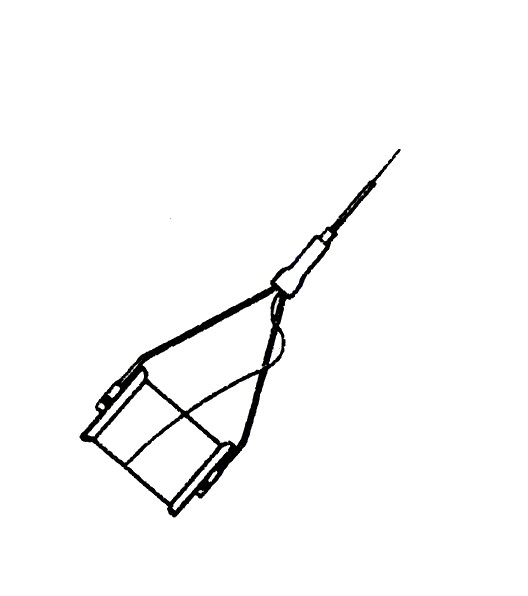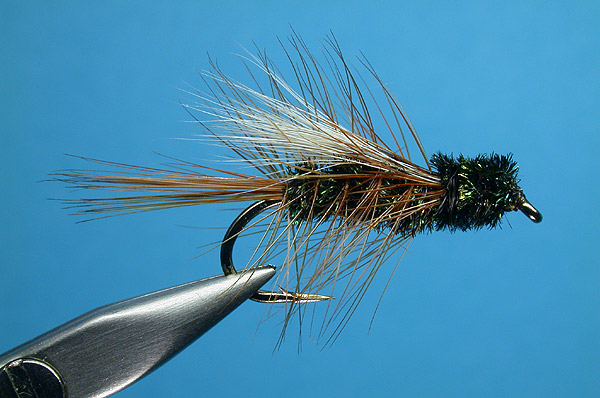
On The Fly
November 2011
"Fly tying is a school from which we never graduate"
TYING NEWS
The Southern Oregon Fly Tyers invite you to attend their meetings the second Tuesday of
each month. The next meeting is November 8, 2011. The meetings start at 6:00 PM, at the Madrone Hill
Mobile Home Park community building near Gold Hill. Bring a friend, come early so you don't miss
anything, and stay late. Tyers need not be experienced, and those with all levels of skill are
welcome. Each meeting a member is encouraged to demonstrate a new or different skill, from simple
to difficult. For more information, call Dan Kellogg at 773-4724.
DIRECTIONS: Take Gold Hill Exit #40, off of I-5 and go west, toward Jacksonville, 1.3 miles, until you
reach the brick entrance way to the Madrone Hill Mobile Home Park on the right. You’ll pass a golf course
parking lot on your left shortly after leaving the freeway. After you turn right into the
mobile home park, proceed to the community building which is located about 100 yards ahead on the left. The
address is 8401 Old Stage Rd. Please park your vehicle on the bare dirt in the parking lot to avoid the
wooden septic covers in the grass
 PATTERN OF THE MONTH -Picket Pin
PATTERN OF THE MONTH -Picket Pin
Hook: Daiichi 1720, 3X-Long Nymph, size 8-14.
Thread: 6-0 black.
Tail: Brown hackle barbs.
Rib: Fine gold wire.
Body: Peacock herl.
Hackle: Brown hackle palmered over body.
Wing: Grey squirrel tail.
Head: Peacock herl.
Tying Instructions:
Step 1 Mash the barb and mount the hook in the vise.
Step 2: Start the thread one eye width behind the eye and lay down an even thread base to a position just
above the hook barb.
Step 3: Select a small bunch of brown hackle barbs, measure them one body length, and tie them on top of
the shank above the barb. Tie down the tail butts on top of the shank with spiral thread turns forward
towards the eye.
Step 4: Tie on a section of gold wire on top of the shank just behind the eye.
Step 5: Select 6-7 peacock herls and tie them in on top behind the eye. Secure them, along with the rib to
the top of the shank with spiral thread wraps to the base of the tail. Leave the wire rib hang to the rear
for use later.
Step 6: Grab the herl strands and make one wrap over the shank and then counter clockwise around the tying
thread. Grasp the herl and thread together and wind the herl rope forward in touching turns covering the
body. Leave a little over 1/8 inch between the front of the body and the eye of the hook. Tie off the herl
and trim the excess.
Step 7: Select a soft brown hackle feather with barbs just longer than the gape of the hook, tie it in by
the butt at the front of the body, and palmer it rearward 5 turns to the base of the tail. Tie off with the
rib wire and trim.
Step 8: Now take the ribbing wire and wrap it forward over the herl body and through the hackle in 5 evenly
spaced turns. Tie off and trim.
Step 9: Select a small bunch of squirrel tail. Measure it 1 1/3 the body length, and tie it on top of the
front of the body. Tie off with several tight wraps and trim excess.
Step 10: Select two peacock herls, tie them on at the base of the wing, take one turn over the shank, wrap
them around the hanging thread, and wrap forward 3-4 turns covering the thread wraps and forming a head.
Tie off and trim excess. Leave a small amount of room before the eye for a whip finish and cement.
We have to go way back to the year 1915 to dig up the history of the Picket Pin pattern
and the tier, Jack Boehme. Jack has been referred to as the founding father of Montana trout fishing with
a fly. He also was a character of sorts and the owner a tavern in Missoula called "The Turf Bar & Grill".
In a cramped corner he ran a tackle and fly business where he developed other famous creations such as
"Boehme's Fancy" for the Madison River and the "Cutthroat" and the "Big Trout" for the Rogue and Klamath
Rivers. He tied commercially, on a home-made vise made from old gun parts, for the early Bob Wards Tackle
Shop. Jack had a national reputation as a tournament fly caster.
Interestingly enough the fly pattern got its name from the material originally used for
the wing. The cowboys of the area had nicknamed the gophers Picket Pin because when sitting upright on the
prairie they looked like the pin used to picket out their horses. Since Jack used these gopher tails for
his hair wing, the name was derived. Now, 96 years later the pattern is still famous and just as effective
as ever. It can tied in wet, dry, and streamer variation by changing hook size and material selection. Lead
wire or bead heads could be used for a faster and deeper sink. The Picket Pin is deadly throughout the
seasons for trout and steelhead.
Tying Tips
The method of palmering the hackle to the rear and using the rib to reinforce that hackle
is a technique used in many wet fly patterns. The fragile herl body also benefits from the wire rib which
adds extra segmentation. Note that the wing is tied on top of the body and not in front. This is vital to
keep the wing at a low angle over the body in true wet fly fashion. For steelhead tie the pattern sparse on
a steelhead hook. For a streamer style use a 4X long hook.
So tie some up, give them a test flight, and let me know how you do.
Tie One On,
Dan Kellogg
(you can contact me at FLYGUY@EZNORTHWEST.COM)
www.tyerstoolshop.com